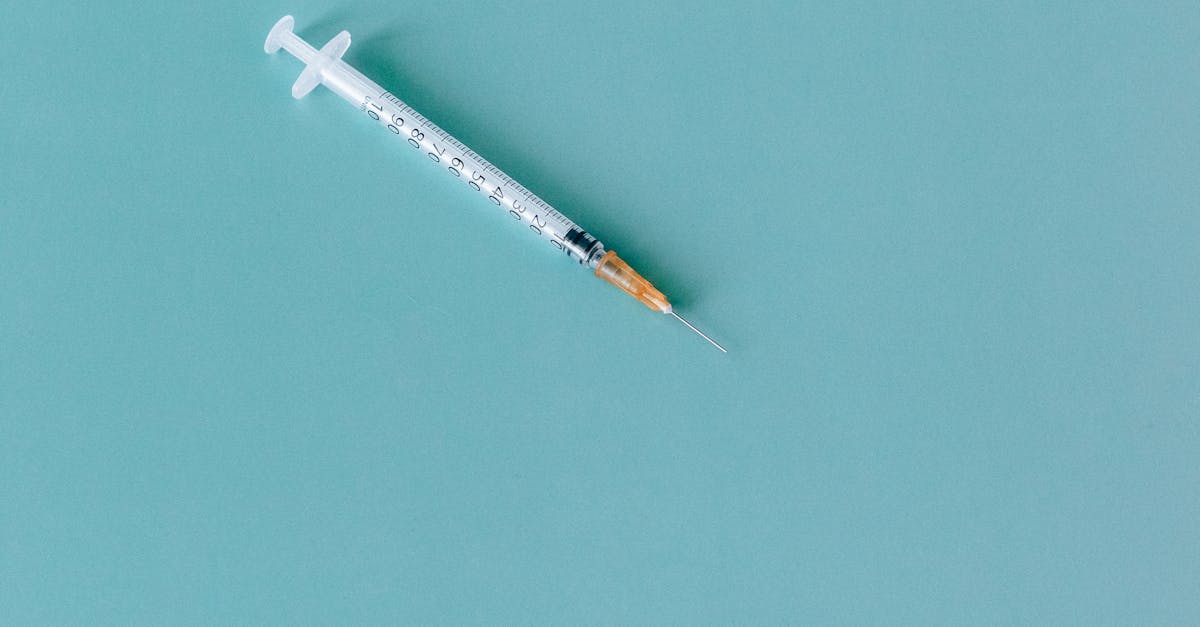Managing Hip Flexor Pain for Endurance Runners: A Comprehensive Guide
Empowering Endurance Runners: A Comprehensive Guide to Preventing and Managing Hip Flexor Pain

Hip flexor pain is a common issue among endurance runners, often resulting from muscle strain, overuse, or improper running mechanics. Understanding the causes of hip flexor pain is crucial for runners to implement preventive measures and effectively manage the condition when it occurs. This comprehensive guide explores the causes, prevention, and treatment strategies for hip flexor pain, empowering runners to maintain optimal hip health and continue their running journeys without discomfort.
1. Causes of Hip Flexor Pain
Hip flexor pain, a common complaint among endurance runners, can stem from various causes. Muscle strain, overuse, and poor biomechanics are the primary culprits behind this discomfort. Muscle strain occurs when the hip flexor muscles are overstretched or torn, often due to sudden or forceful movements. Overuse, on the other hand, results from repetitive stress on the hip flexors during running, leading to inflammation and pain. Lastly, poor biomechanics, such as improper running form or muscle imbalances, can put excessive strain on the hip flexors, contributing to their discomfort. Identifying the underlying cause of hip flexor pain is essential for developing targeted prevention and treatment strategies.
Muscle Strain
Muscle strain, a common cause of hip flexor pain in runners, occurs when the hip flexor muscles are overstretched or torn. This type of injury often results from sudden or forceful movements, such as sprinting, jumping, or rapidly changing direction. The sudden strain on the muscles can cause small tears in the muscle fibers, leading to pain, tenderness, and reduced range of motion. Muscle strains can vary in severity, with some causing only mild discomfort and others resulting in significant pain and disability. Understanding the causes and symptoms of muscle strain can help runners take preventive measures and seek appropriate treatment to facilitate healing and recovery.
Overuse
Overuse is another common cause of hip flexor pain in endurance runners. Repetitive stress on the hip flexors during running can lead to inflammation and pain. This overuse can occur when runners gradually increase their training intensity or duration too quickly, or when they maintain a high level of training without adequate rest and recovery. Overuse injuries develop when the muscles are not given sufficient time to repair themselves, leading to micro-tears and inflammation in the hip flexor muscles. Runners who experience hip flexor pain due to overuse may notice that the pain gradually worsens with increased activity and improves with rest. Understanding the principles of training load management and incorporating appropriate rest and recovery into training plans can help runners prevent overuse injuries and maintain optimal hip health.
Poor Biomechanics
Poor biomechanics, such as improper running form or muscle imbalances, can contribute to hip flexor pain in runners. For example, excessive pronation, or inward rolling of the foot, can strain the hip flexors. This occurs because excessive pronation can lead to an altered gait pattern, increasing the load and stress on the hip flexors. Additionally, muscle imbalances, such as weak hip abductors or tight hip adductors, can disrupt the natural mechanics of the hip joint, placing excessive strain on the hip flexors. Runners with poor biomechanics may experience hip flexor pain even with relatively low training volumes. Addressing biomechanical issues through proper running form coaching, strengthening exercises, and stretching can help reduce hip flexor pain and improve overall running efficiency.
2. Preventing Hip Flexor Pain

Preventing hip flexor pain is key for endurance runners. This section provides practical tips to help runners avoid hip flexor discomfort before it occurs. Incorporating these preventive measures into training routines can significantly reduce the risk of developing hip flexor pain and keep runners healthy and pain-free. Simple yet effective strategies such as warming up properly before runs, cooling down with static stretches, and performing regular strengthening exercises for the hip flexors and core muscles can go a long way in safeguarding hip health. Additionally, paying attention to running form and addressing any biomechanical imbalances can help runners maintain optimal hip mechanics, reducing the likelihood of hip flexor strain or overuse injuries.
Warm-Up and Cool-Down
Proper warm-up exercises before running and cooling down with static stretches afterward are crucial for preventing hip flexor pain. Warm-up exercises prepare the hip flexors for activity by increasing blood flow to the muscles and improving their range of motion. This helps reduce the risk of muscle strains and other injuries. Dynamic stretches, such as leg swings, hip circles, and lunges, are ideal for warming up the hip flexors. Cooling down with static stretches after running helps the hip flexors recover by improving flexibility and reducing muscle tightness. Holding each stretch for 20-30 seconds allows the muscles to lengthen and relax. Incorporating these warm-up and cool-down routines into running practices can significantly reduce the risk of developing hip flexor pain and keep runners healthy and performing at their best.
Strengthening Exercises
Strengthening the hip flexors and core muscles is essential for preventing hip flexor pain in runners. Strong hip flexors and core muscles help stabilize the hips, improve running form, and reduce the risk of injury. Some effective strengthening exercises for the hip flexors include squats, lunges, and leg raises. These exercises target the muscles responsible for hip flexion and help build strength and endurance. Core strengthening exercises, such as planks, side planks, and Russian twists, help stabilize the pelvis and improve overall core strength, which can also contribute to reducing hip flexor pain. Incorporating these exercises into a regular fitness routine can significantly improve hip stability and reduce the likelihood of developing hip flexor pain, allowing runners to enjoy their sport pain-free.
Proper Running Form
Proper running form is crucial for minimizing stress on the hip flexors and preventing pain. Maintaining an upright posture while running helps distribute weight evenly and reduces the load on the hip flexors. Landing on the midfoot, rather than the heel or forefoot, also helps reduce stress on the hip flexors by promoting a more efficient stride. Additionally, avoiding overstriding, or taking steps that are too long, can help prevent excessive strain on the hip flexors. Focusing on these aspects of running form can significantly reduce the risk of developing hip flexor pain and improve overall running efficiency.
3. Treatment for Hip Flexor Pain
If hip flexor pain occurs, prompt treatment is essential to alleviate discomfort, prevent further injury, and facilitate healing. This section outlines effective treatment strategies for hip flexor pain, empowering individuals to manage this condition effectively. Rest, ice, compression, and elevation, commonly known as the RICE protocol, can help reduce inflammation and pain in the early stages. Gentle stretching and massage can help improve flexibility and reduce muscle tension. Physical therapy can provide personalized exercises and modalities to address the underlying causes of hip flexor pain and restore optimal hip function. In some cases, over-the-counter pain relievers or anti-inflammatory medications may be recommended to manage pain and inflammation. By following these treatment strategies and seeking professional guidance when necessary, individuals can effectively address hip flexor pain, regain mobility, and return to their daily activities without discomfort.
Rest and Ice
Resting the affected hip and applying ice packs are effective initial measures for reducing inflammation and pain associated with hip flexor pain. Rest helps reduce stress on the injured hip flexor muscles, allowing them to recover. Ice packs applied to the affected area can help reduce swelling and provide a numbing effect, alleviating pain and promoting healing. It is recommended to apply ice packs for 15-20 minutes at a time, several times a day. Rest and ice therapy can be particularly beneficial in the early stages of hip flexor pain to minimize discomfort and facilitate the healing process.
Stretching and Massage
Gentle stretching exercises and massage can effectively release tension and improve flexibility in the hip flexor muscles, contributing to pain relief and recovery. Stretching helps elongate and relax the hip flexors, reducing stiffness and promoting increased range of motion. Massage, when performed by a trained professional, can help release muscle knots and adhesions, further improving flexibility and reducing pain. Incorporating regular stretching and massage into a treatment plan can greatly benefit individuals experiencing hip flexor pain, helping restore optimal hip function and mobility.
Physical Therapy
Physical therapy plays a vital role in addressing hip flexor pain by providing a comprehensive assessment and personalized treatment plan. A physical therapist will conduct a thorough evaluation to determine the underlying cause of the pain, considering factors such as muscle imbalances, posture, and biomechanics. Based on the assessment, they will recommend specific exercises and treatments tailored to the individual’s needs. These may include targeted stretching, strengthening exercises, and manual therapy techniques to improve flexibility, reduce muscle tension, and restore proper hip function. Physical therapy can effectively address the root cause of hip flexor pain, promoting long-term healing and preventing recurrence.
Medication
Over-the-counter pain relievers and anti-inflammatory medications can provide temporary relief from hip flexor pain. These medications, such as ibuprofen or naproxen, work by reducing inflammation and blocking pain signals. They can be particularly helpful in managing acute pain or pain that worsens with activity. However, it is important to use these medications as directed and to be mindful of potential side effects. Long-term use of pain relievers should be discussed with a healthcare professional to assess the risks and benefits.
4. When to Seek Medical Advice

Seeking medical advice is crucial if hip flexor pain is severe, persistent, or accompanied by other concerning symptoms. These signs may indicate an underlying medical condition that requires professional evaluation and treatment. Sudden onset of pain, especially if it is sharp and severe, could be a sign of a muscle tear or other serious injury. Persistent pain that does not improve with rest or home remedies may also warrant medical attention. Additionally, if hip flexor pain is accompanied by numbness or tingling, weakness in the leg, or fever, it is important to seek medical advice promptly, as these symptoms may indicate nerve damage or infection.
Sudden Onset of Pain
Sudden onset of pain in the hip flexors, particularly if it is sharp and severe, warrants prompt medical attention. This type of pain may indicate a muscle tear or other serious injury. Muscle tears occur when the hip flexor muscles are overstretched or torn, often due to sudden or forceful movements. Symptoms of a muscle tear may include sharp pain, swelling, bruising, and difficulty moving the hip. Other serious injuries that can cause sudden hip flexor pain include hip fractures, dislocations, and nerve damage. If you experience sudden, severe pain in your hip flexors, it is crucial to seek medical evaluation to determine the underlying cause and receive appropriate treatment.
Pain that Worsens with Activity
Hip flexor pain that intensifies during or after running may indicate an underlying condition that requires further evaluation. This type of pain may be caused by overuse, muscle strain, or other injuries. Overuse occurs when the hip flexor muscles are subjected to repetitive stress over time, leading to inflammation and pain. Muscle strain, on the other hand, occurs when the hip flexor muscles are overstretched or torn, often due to sudden or forceful movements. Other conditions that can cause hip flexor pain that worsens with activity include hip bursitis, tendonitis, and labral tears. If you experience hip flexor pain that intensifies during or after running, it is important to consult with a healthcare professional to rule out any underlying conditions and receive appropriate treatment.
Numbness or Tingling
Numbness or tingling in the hip or leg is a serious symptom that warrants immediate medical attention. These symptoms may indicate nerve damage, which can be caused by various conditions such as a herniated disc, spinal stenosis, or peripheral neuropathy. Nerve damage can lead to loss of sensation, weakness, and pain. In some cases, it can also cause permanent nerve damage. If you experience numbness or tingling in your hip or leg, it is crucial to seek medical evaluation promptly to determine the underlying cause and receive appropriate treatment. Ignoring these symptoms can lead to further nerve damage and long-term complications.
Other Symptoms
Additional symptoms such as fever, swelling, or joint stiffness could indicate an infection or other underlying medical condition. Fever is a common symptom of infection and can be accompanied by chills, fatigue, and muscle aches. Swelling and joint stiffness, on the other hand, may indicate an inflammatory condition such as arthritis or bursitis. If you experience any of these symptoms along with hip flexor pain, it is important to seek medical attention promptly. Early diagnosis and treatment can help prevent serious complications and promote a faster recovery.
5. Additional Resources
This section provides links to external resources and references for further information on hip flexor pain, empowering readers to delve deeper into the topic and make informed decisions about their health. These resources offer comprehensive information, expert insights, and practical guidance to support readers in managing hip flexor pain effectively. By exploring these additional materials, readers can gain a broader understanding of the causes, prevention, and treatment of hip flexor pain, enabling them to take an active role in their recovery and maintain optimal hip health.
American Academy of Orthopaedic Surgeons (AAOS)
The American Academy of Orthopaedic Surgeons (AAOS) is a leading provider of comprehensive information on hip flexor pain. Their website offers a dedicated page (Hip Flexor Pain) that delves into the causes, symptoms, diagnosis, and treatment options for this condition. The AAOS website is a valuable resource for individuals seeking reliable and up-to-date information on hip flexor pain. It provides detailed explanations of various treatment methods, including nonsurgical and surgical interventions. Additionally, the AAOS website offers a platform for patients to connect with orthopaedic surgeons and other healthcare professionals, facilitating access to expert advice and support.
Mayo Clinic
The Mayo Clinic is a world-renowned medical center that provides a wealth of information on hip flexor pain. Their website features a comprehensive page on Hip Flexor Strain that covers the causes, symptoms, and treatment options for this condition. The Mayo Clinic website is a valuable resource for individuals seeking reliable and up-to-date information on hip flexor pain. It provides detailed explanations of the anatomy of the hip flexor muscles, the mechanisms of injury, and the various treatment methods available. Additionally, the Mayo Clinic website offers a platform for patients to connect with healthcare professionals and access online support groups, fostering a sense of community and shared experiences.
National Library of Medicine (NIH)
The National Library of Medicine (NIH) is a leading provider of health information and resources. Their website offers a comprehensive book on Hip Flexor Injuries that delves into the causes, diagnosis, and management of this condition. The NIH website is a valuable resource for individuals seeking in-depth and evidence-based information on hip flexor pain. It provides detailed descriptions of the different types of hip flexor injuries, including strains, tears, and avulsions. Additionally, the NIH website offers a platform for researchers and healthcare professionals to access the latest scientific literature and advancements in the field of hip flexor injuries.
Quiz
Question 1: What is the most common cause of hip flexor pain in runners?
(a) Muscle strain (b) Overuse (c) Poor biomechanics (d) Infection
Question 2: Which of the following is NOT a symptom of hip flexor pain?
(a) Pain in the hip or groin (b) Stiffness in the hip joint (c) Numbness or tingling in the leg (d) Fever
Question 3: What is the primary goal of RICE therapy for hip flexor pain?
(a) To reduce inflammation and pain (b) To improve flexibility (c) To strengthen the hip flexor muscles (d) To prevent further injury
Answer Key:
Question 1: (a) Question 2: (d) Question 3: (a)
